Abstract
Nitrogen-starved yeast derepress a general amino acid permease which transports basic and hydrophobic amino acids. Although both groups of amino acids are metabolized, the derivatives of the basic amino acids are retained by the cells, whereas those of the hydrophobic amino acids are released as acidic and neutral deaminated derivatives. The release of the deaminated derivatives of the hydrophobic amino acids only occurs in the presence of glucose, which presumably produces amino acceptors. The accumulation of intracellular amino acids results in trans-inhibition of the uptake of exogenous amino acids whether the intracellular amino acid is a basic amino acid or the product of intracellular transamination from a hydrophobic amino acid. Variation of permease and transaminase activity was measured during growth under repressed (ammonia-grown) and derepressed (proline-grown) conditions. Maximum levels for both activities occurs at the mid-exponential phase.
Full text
PDF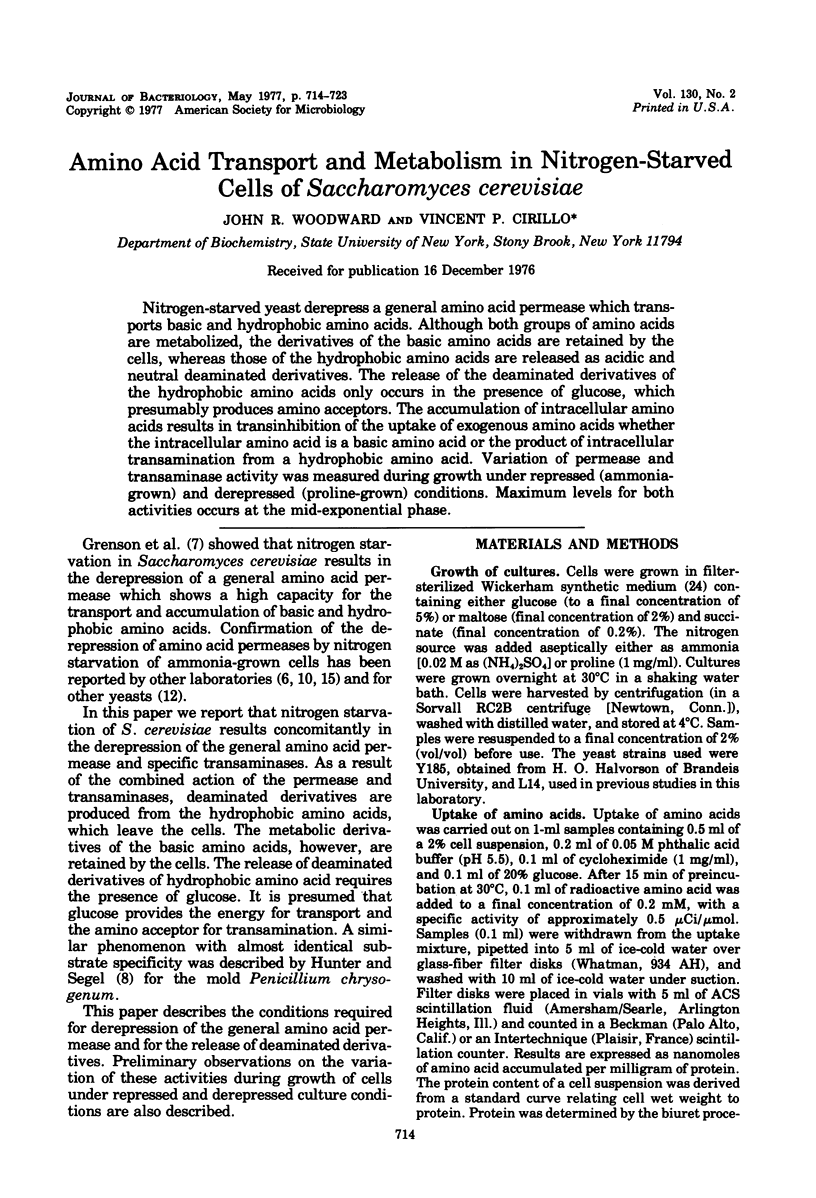
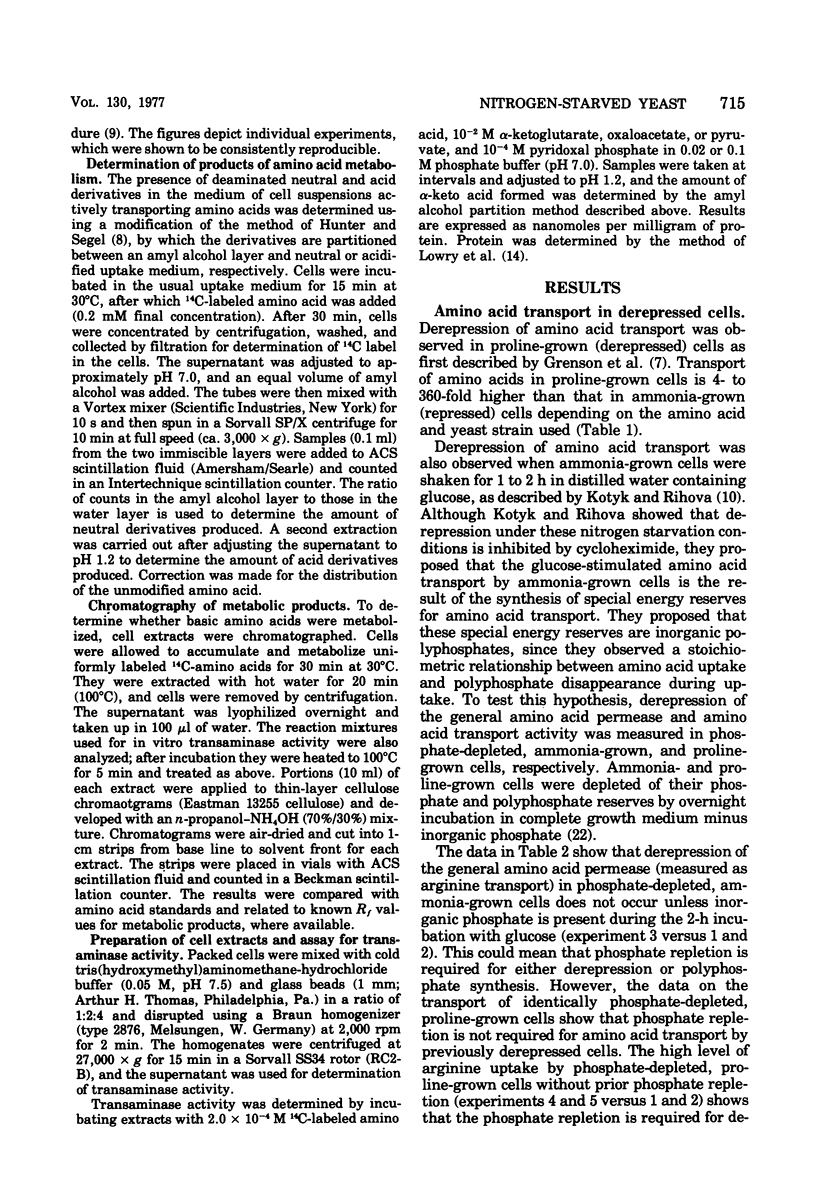
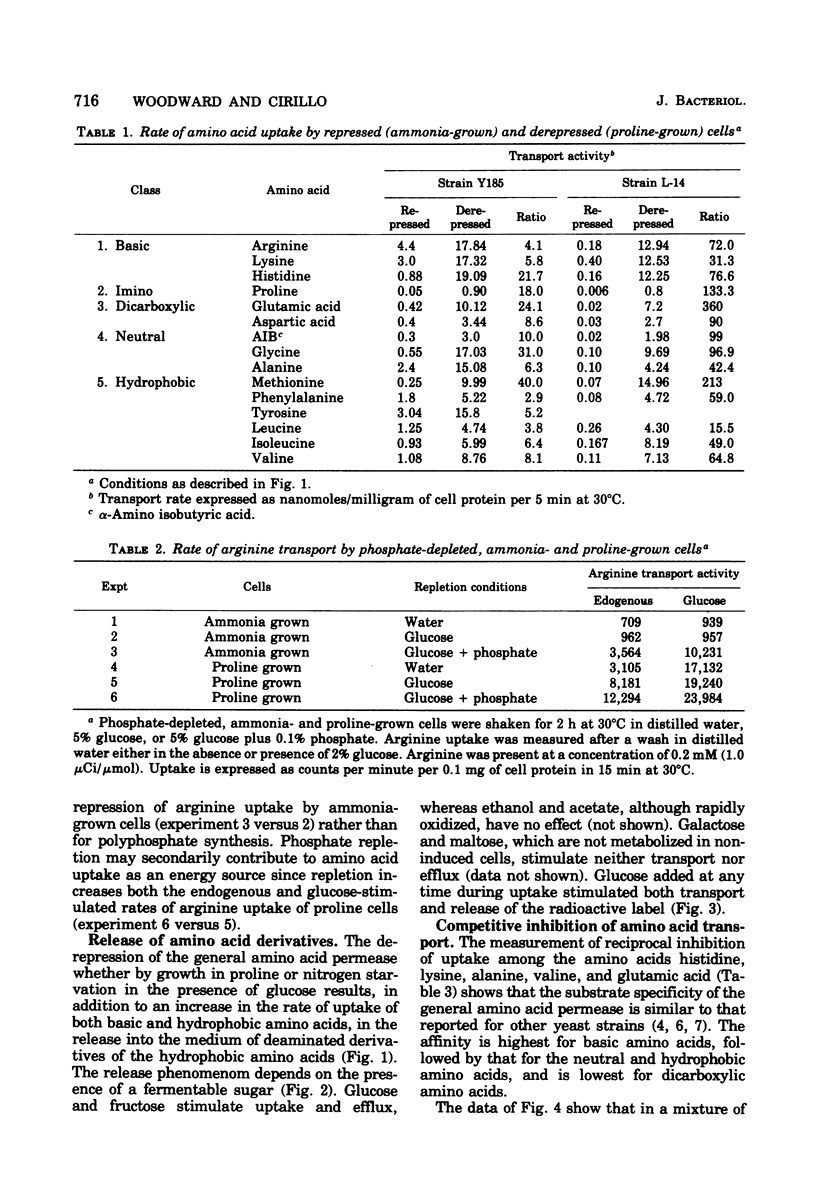
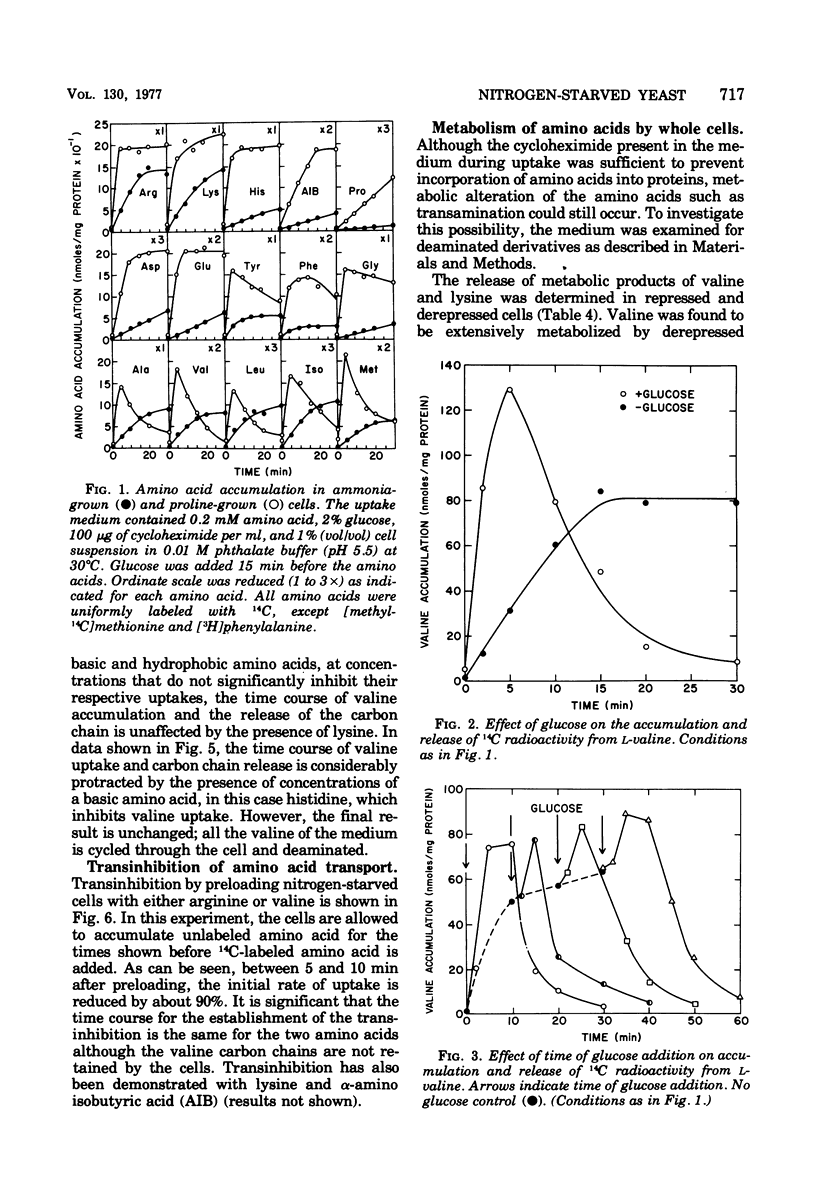
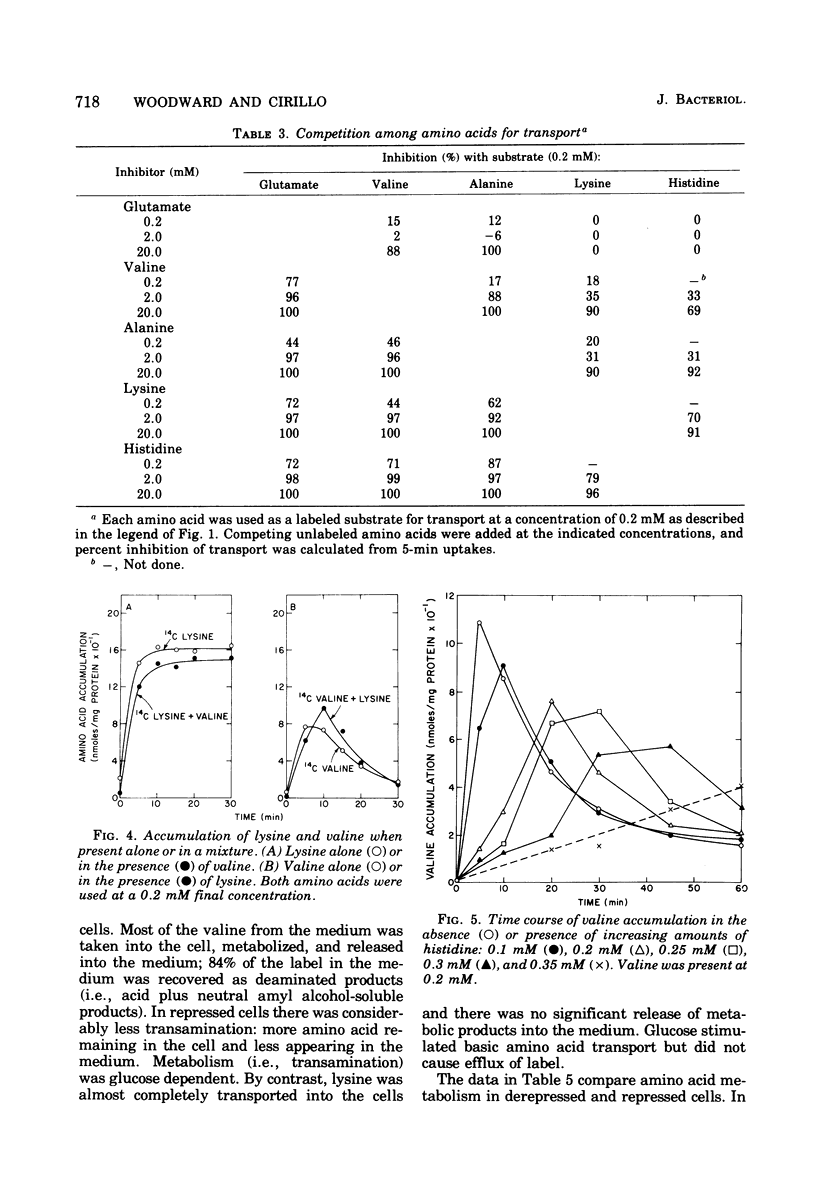
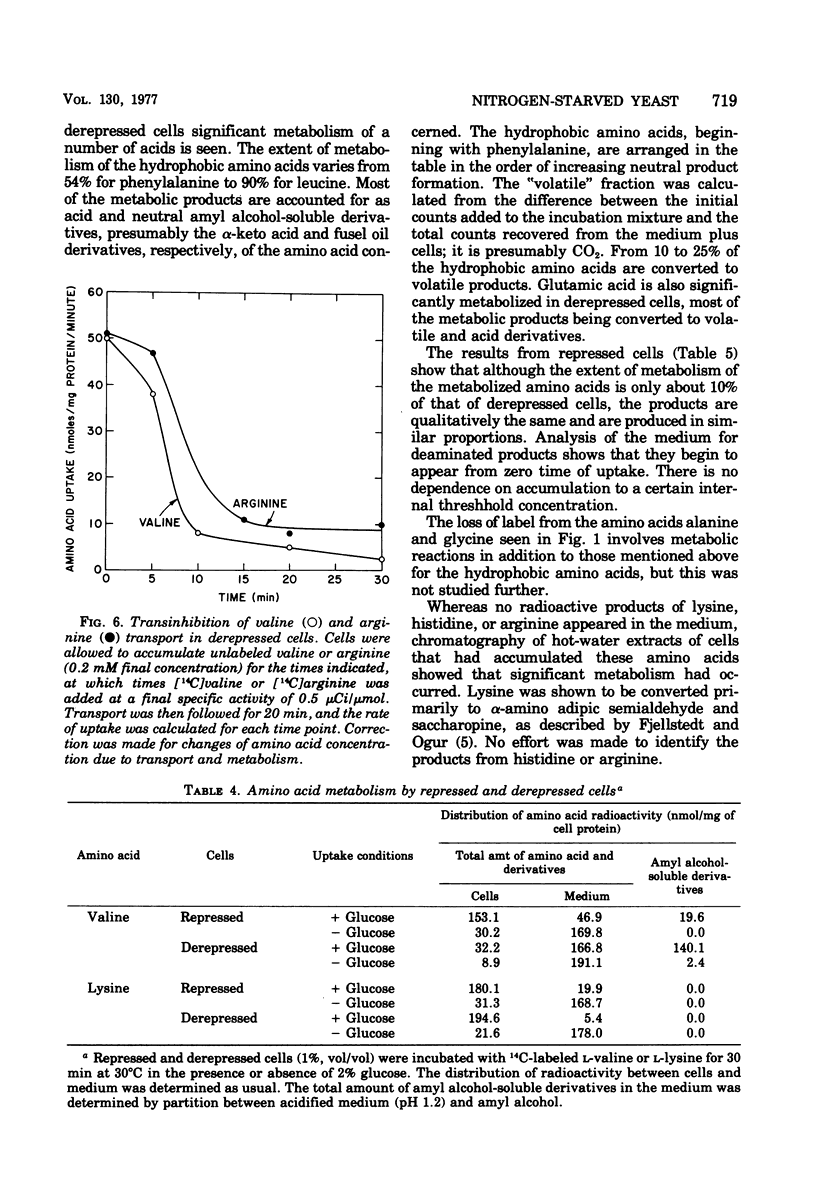
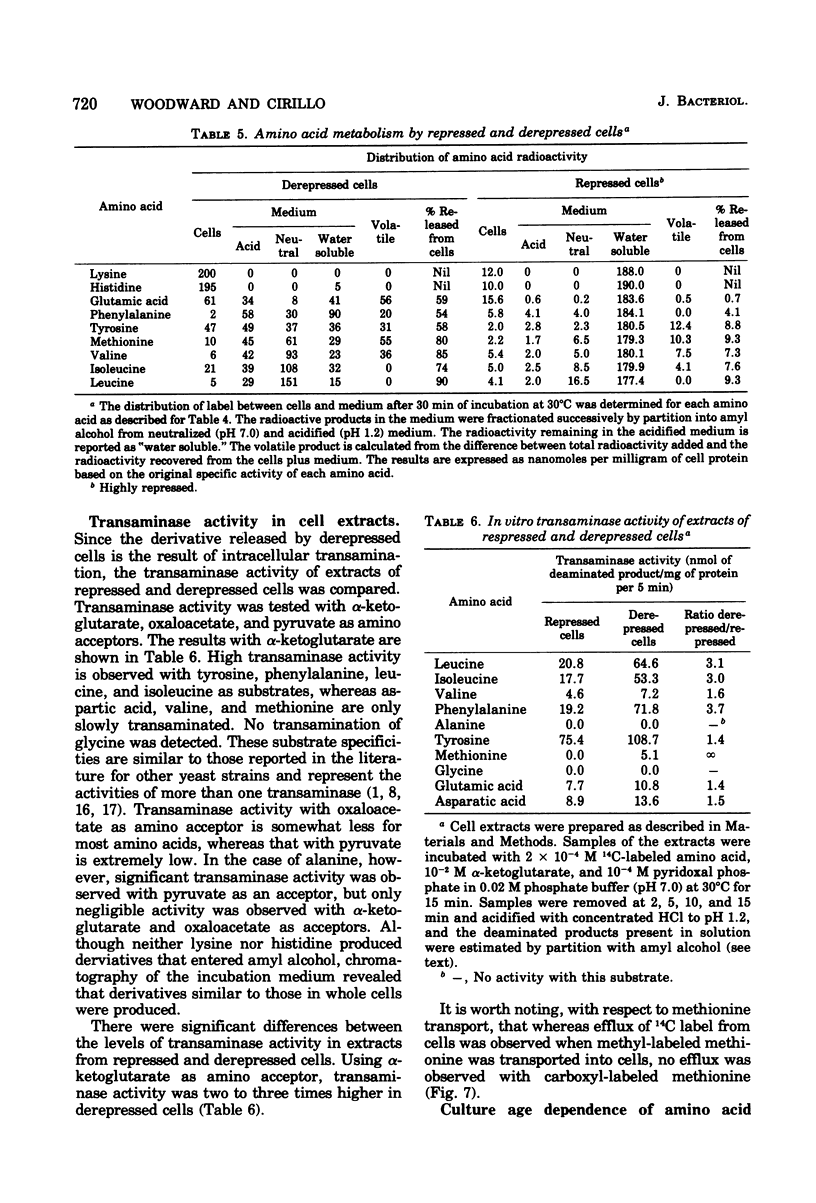
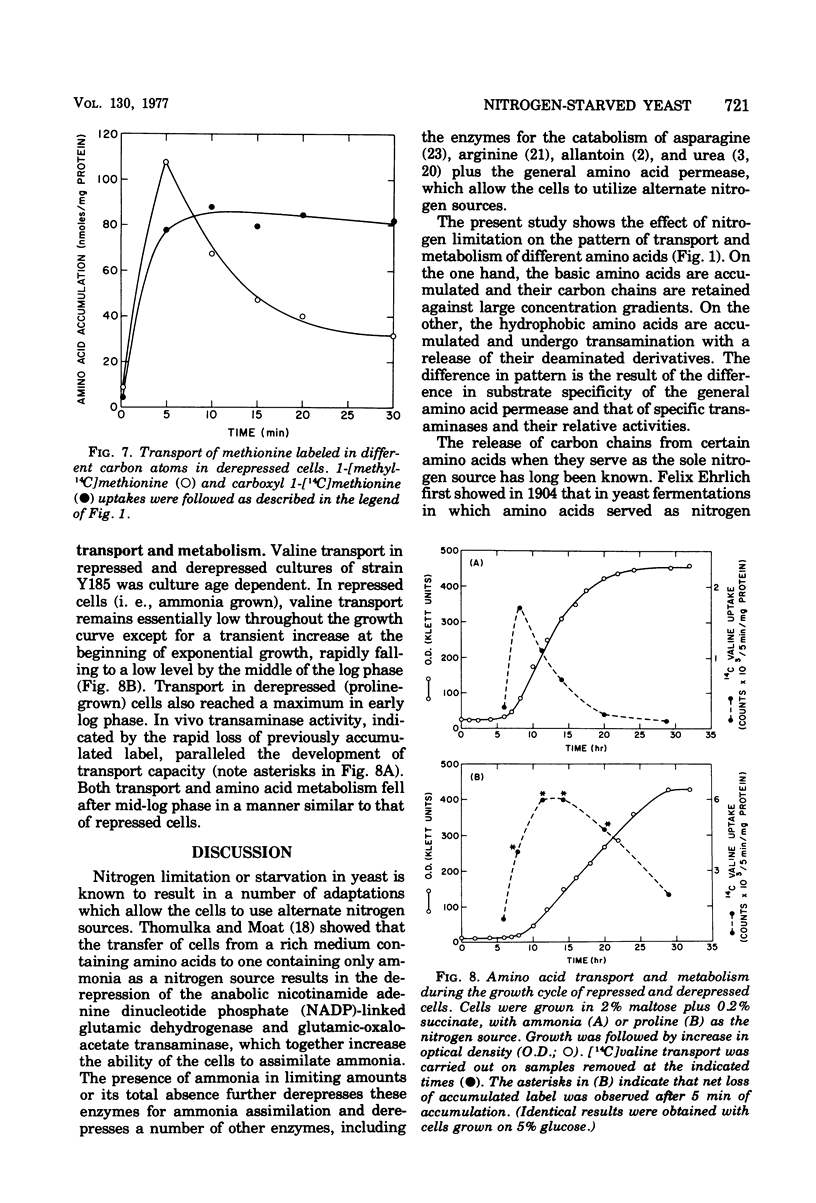
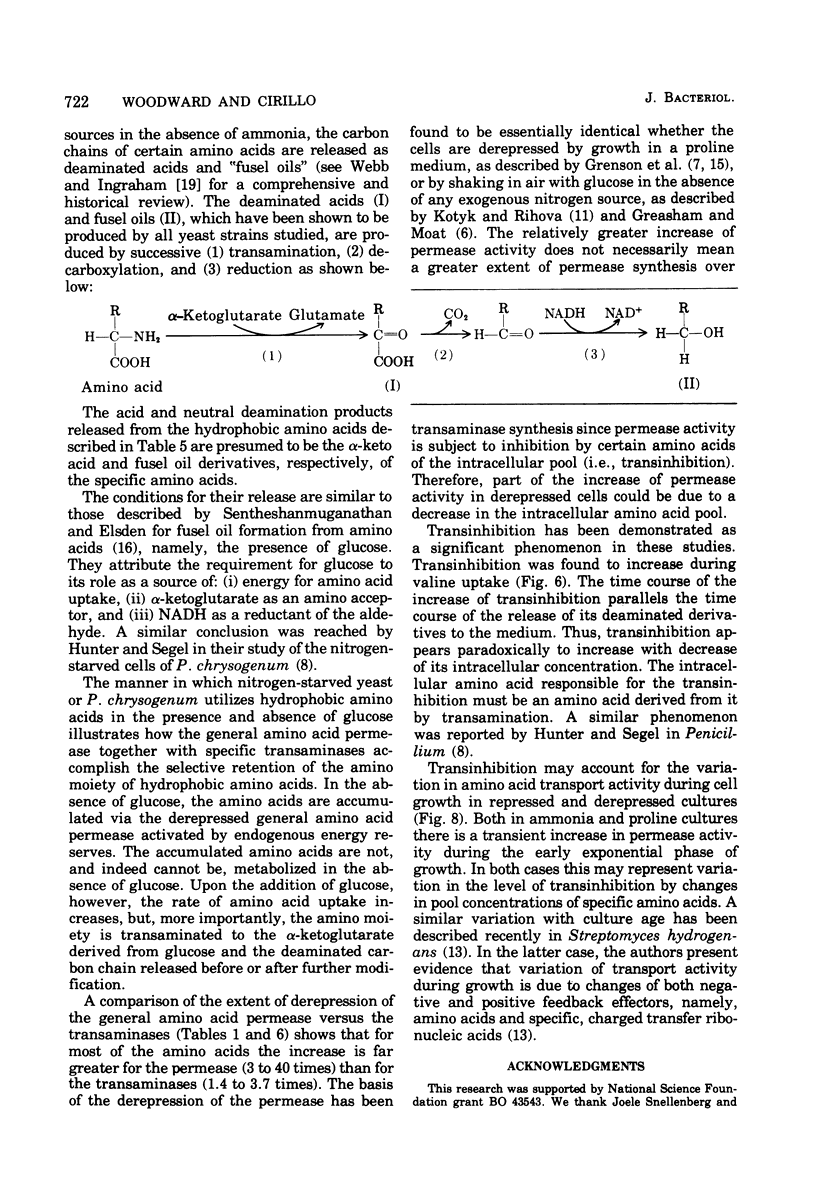
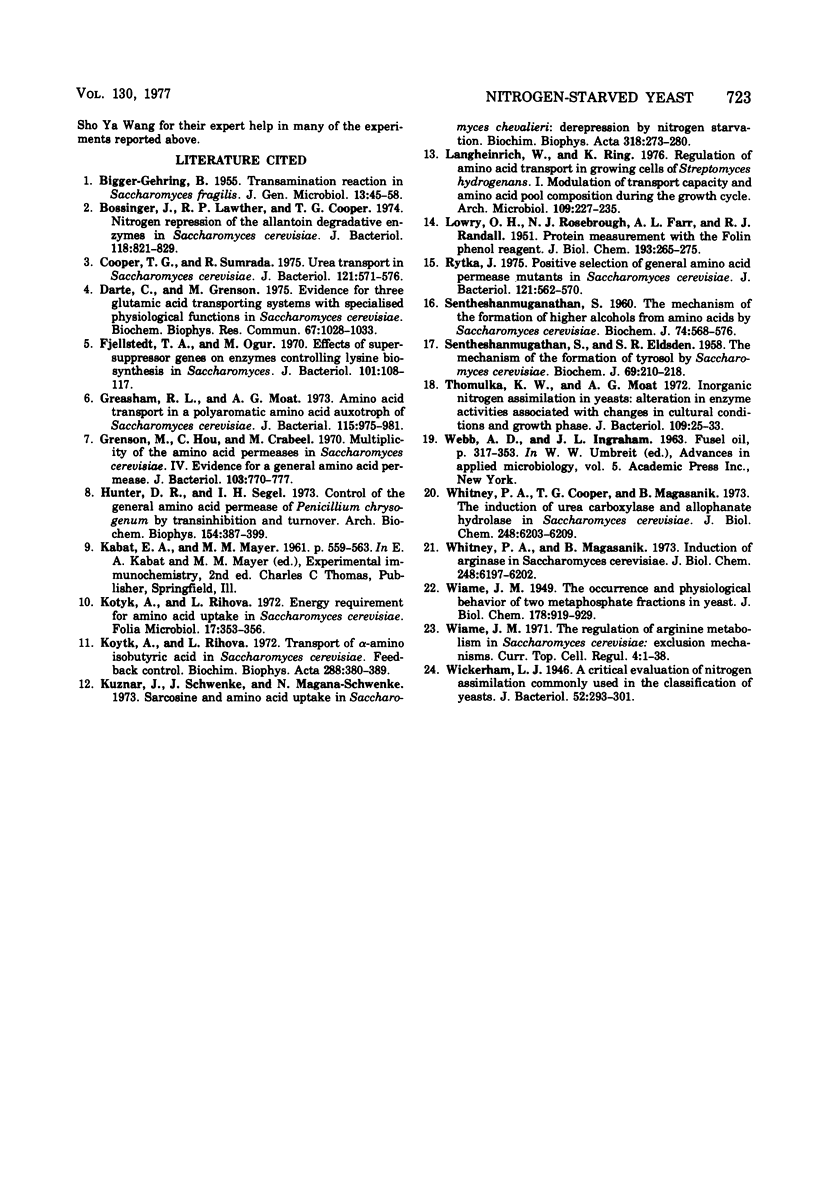
Selected References
These references are in PubMed. This may not be the complete list of references from this article.
- BIGGER-GEHRING L. Transamination reactions in Saccharomyces fragilis. J Gen Microbiol. 1955 Aug;13(1):45–53. doi: 10.1099/00221287-13-1-45. [DOI] [PubMed] [Google Scholar]
- Bossinger J., Lawther R. P., Cooper T. G. Nitrogen repression of the allantoin degradative enzymes in Saccharomyces cerevisiae. J Bacteriol. 1974 Jun;118(3):821–829. doi: 10.1128/jb.118.3.821-829.1974. [DOI] [PMC free article] [PubMed] [Google Scholar]
- Cooper T. G., Sumrada R. Urea transport in Saccharomyces cerevisiae. J Bacteriol. 1975 Feb;121(2):571–576. doi: 10.1128/jb.121.2.571-576.1975. [DOI] [PMC free article] [PubMed] [Google Scholar]
- Darte C., Grenson M. Evidence for three glutamic acid transporting systems with specialized physiological functions in Saccharomyces cerevisiae. Biochem Biophys Res Commun. 1975 Dec 1;67(3):1028–1033. doi: 10.1016/0006-291x(75)90777-9. [DOI] [PubMed] [Google Scholar]
- Fjellstedt T. A., Ogur M. Effects of supersuppressor genes on enzymes controlling lysine biosynthesis in Saccharomyces. J Bacteriol. 1970 Jan;101(1):108–117. doi: 10.1128/jb.101.1.108-117.1970. [DOI] [PMC free article] [PubMed] [Google Scholar]
- Greasham R. L., Moat A. G. Amino acid transport in a polyaromatic amino acid auxotroph of Saccharomyces cerevisiae. J Bacteriol. 1973 Sep;115(3):975–981. doi: 10.1128/jb.115.3.975-981.1973. [DOI] [PMC free article] [PubMed] [Google Scholar]
- Grenson M., Hou C., Crabeel M. Multiplicity of the amino acid permeases in Saccharomyces cerevisiae. IV. Evidence for a general amino acid permease. J Bacteriol. 1970 Sep;103(3):770–777. doi: 10.1128/jb.103.3.770-777.1970. [DOI] [PMC free article] [PubMed] [Google Scholar]
- Hunter D. R., Segel I. H. Control of the general amino acid permease of Penicillium chrysogenum by transinhibition and turnover. Arch Biochem Biophys. 1973 Jan;154(1):387–399. doi: 10.1016/0003-9861(73)90071-4. [DOI] [PubMed] [Google Scholar]
- Kotyk A., Ríhová L. Energy requirement for amino acid uptake in Saccharomyces cerevisiae. Folia Microbiol (Praha) 1972;17(5):353–356. doi: 10.1007/BF02884102. [DOI] [PubMed] [Google Scholar]
- Kotyk A., Ríhová L. Transport of -aminoisobutyric acid in Saccharomyces cerevisiae. Biochim Biophys Acta. 1972 Nov 2;288(2):380–389. doi: 10.1016/0005-2736(72)90259-3. [DOI] [PubMed] [Google Scholar]
- Kuznar J., Schwencke J., Magaña-Schwencke N. Sarcosine and imino acid uptake in Saccharomyces chevalieri. Derepression by nitrogen starvation. Biochim Biophys Acta. 1973 Aug 22;318(2):273–280. doi: 10.1016/0005-2736(73)90120-x. [DOI] [PubMed] [Google Scholar]
- LOWRY O. H., ROSEBROUGH N. J., FARR A. L., RANDALL R. J. Protein measurement with the Folin phenol reagent. J Biol Chem. 1951 Nov;193(1):265–275. [PubMed] [Google Scholar]
- Langheinrich W., Ring K. Regulation of amino acid transport in growing cells of Streptomyces hydrogenans. I. Modulation of transport capacity and amino acid pool composition during the growth cycle. Arch Microbiol. 1976 Sep 1;109(3):227–235. doi: 10.1007/BF00446633. [DOI] [PubMed] [Google Scholar]
- Rytka J. Positive selection of general amino acid permease mutants in Saccharomyces cerevisiae. J Bacteriol. 1975 Feb;121(2):562–570. doi: 10.1128/jb.121.2.562-570.1975. [DOI] [PMC free article] [PubMed] [Google Scholar]
- SENTHESHANMUGANATHAN S., ELSDEN S. R. The mechanism of the formation of tyrosol by Saccharomyces cerevisiae. Biochem J. 1958 Jun;69(2):210–218. doi: 10.1042/bj0690210. [DOI] [PMC free article] [PubMed] [Google Scholar]
- SENTHESHANUGANATHAN S. The mechanism of the formation of higher alcohols from amino acids by Saccharomyces cerevisiae. Biochem J. 1960 Mar;74:568–576. doi: 10.1042/bj0740568. [DOI] [PMC free article] [PubMed] [Google Scholar]
- Thomulka K. W., Moat A. G. Inorganic nitrogen assimilation in yeasts: alteration in enzyme activities associated with changes in cultural conditions and growth phase. J Bacteriol. 1972 Jan;109(1):25–33. doi: 10.1128/jb.109.1.25-33.1972. [DOI] [PMC free article] [PubMed] [Google Scholar]
- Whitney P. A., Cooper T. G., Magasanik B. The induction of urea carboxylase and allophanate hydrolase in Saccharomyces cerevisiae. J Biol Chem. 1973 Sep 10;248(17):6203–6209. [PubMed] [Google Scholar]
- Whitney P. A., Magasanik B. The induction of arginase in Saccharomyces cerevisiae. J Biol Chem. 1973 Sep 10;248(17):6197–6202. [PubMed] [Google Scholar]
- Wickerham L. J. A Critical Evaluation of the Nitrogen Assimilation Tests Commonly Used in the Classification of Yeasts. J Bacteriol. 1946 Sep;52(3):293–301. [PMC free article] [PubMed] [Google Scholar]


